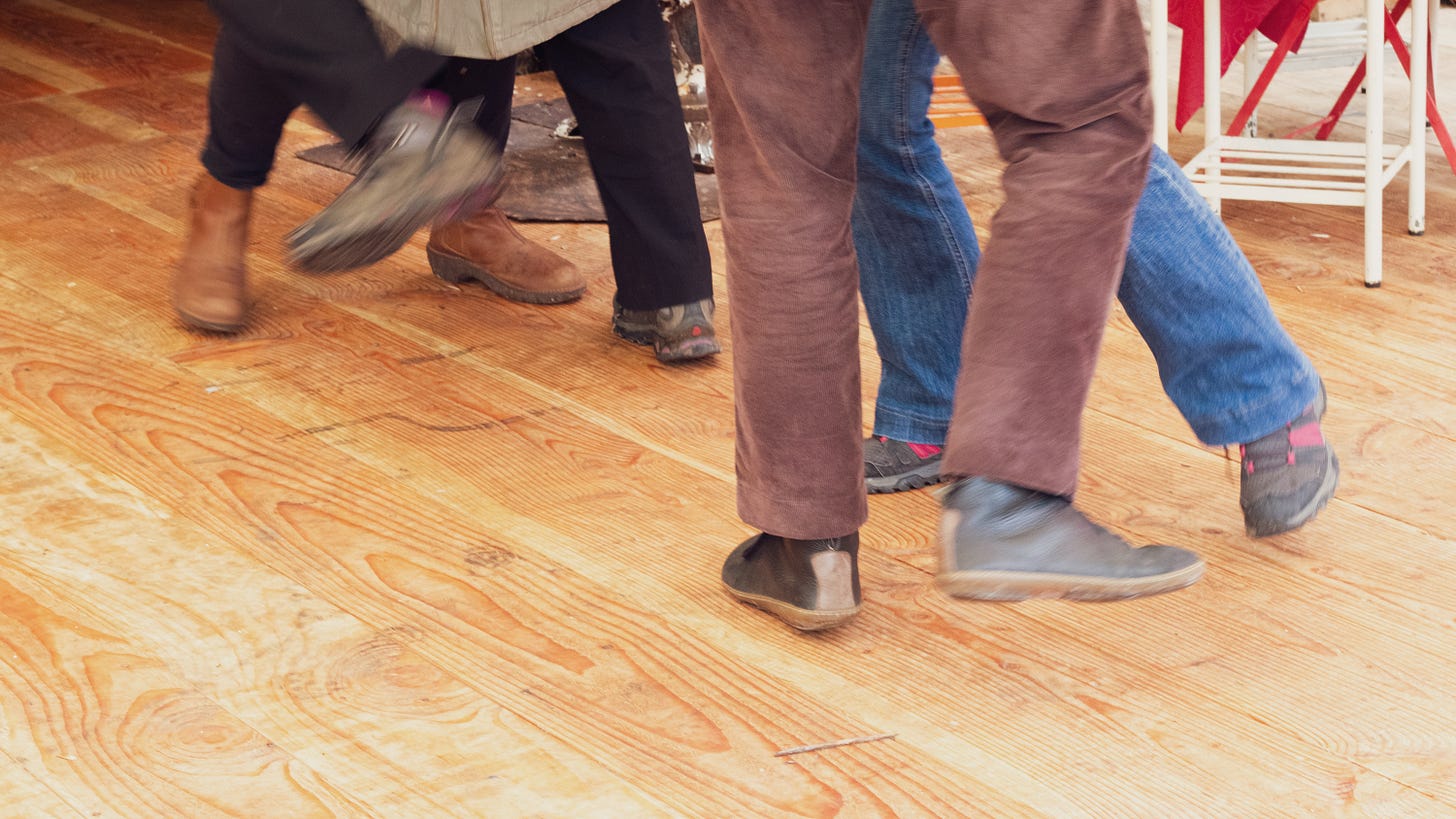Come On, Everybody! Let’s Do the Pivot!
The steps are easy, and you’ve earned the right to try this dance.
Several people I have been talking to lately insist that the post-career years are an excellent time to reinvent oneself. Retirement coach Karen Midyet discussed reinvention in a podcast interview we had earlier this month. Paul Long also made a strong case for reinvention in this week’s podcast.
Reinvention may sound hard and complicated. It smacks of a laboratory or a complex engineering project. So I won’t use that word. Instead, I’ll talk about the pivot. It may help to think of it as a dance, like one of those new dances that bubbled up every other week in the early 1960s, a minute before the Beatles. (Here’s a soundtrack, courtesy of Little Eva.)
Hey now have you heard about a brand new dance now,
We’re doing the pivot, you should give it a chance now,
Just press down on your heels, move your toes to the left,
Now pivot to the right and now you know all the rest,
So come on, come on, give your life a turn for the best!
(Sorry, just had to get that out of my system.)
You may know the dance moves. If your life has been anything like mine, you’ve had to do the pivot more than once.
I made my first pivot at age 11. Four years before, I had contracted a severe case of authoritis and made up my mind that I would write books. My mother threw cold water on the idea, reminding me that writers didn’t always make a lot of money and to think instead about a steady paycheck. So I pivoted to journalism – it was a job that paid a salary, but I would be paid to write. That pivot worked out well for a while. After 10 years of school newspapers, internships, and a journalism degree, I spent another decade writing for newspapers and magazines.
Then my wife (also a journalist) and I put location before profession. We moved to Baltimore and looked for any jobs we could find. My pivot took me into the business of writing reports and marketing materials for universities, hospitals, and foundations – a field that carries the label marketing communications. (Similarly, my wife’s pivot led to jobs in corporate communications for hospitals and universities.)
Pivot Mastery
I won’t bore you with my torturous career path, but the upshot is that I made several more pivots, usually when my job reached a dead end. Twice, when I seemed to be terminally unemployable, I opted for self-employment. By the time I transitioned from self-employment to self-retirement, I was a seasoned pivoter.
Pivoting is always a test of resiliency. Sometimes pivoting is also about survival. When technological change decimates your industry or renders all your wisdom and experience unnecessary, when a personality clash make your job untenable, you pivot to something new if you have the necessary resiliency to bounce back.
But after your work life is over, pivoting is an entirely different matter. Your back is not against the wall. At this point, you no longer bear the weighty responsibility of your family’s survival. A burden like that squeezes the fun right out of it.
A post-career pivot can be just for fun. Everything doesn’t hang in the balance. The pressure is off. We have the freedom to take risks on things that just might not be practical. And if they don’t work out, so what? They were useful experiments. We can try those things that we dreamed of doing but had to abandon because of family obligations. We can pivot towards the passions we reluctantly put aside.
You’ve Got Time
Besides, the retirement you planned on may look nothing like the retirement you get. For starters, it could be incredibly long. You may have another 30, maybe even 40 years left after you step back from your career. No matter how much you’ve saved, will it really be enough to keep you comfortable for 40 more years? In short, you’ll need to do something. Why not pivot to something you’re really passionate about?
As a seasoned pivoter, I’ve come to believe that a pivot can be as simple as rearranging your expertise, your skills, and your aptitude into a new configuration. I went from a writer of news to a writer of magazine features, then to a writer of promotional materials for clients, then to a self-employed writer serving clients. The core skill, writing, was the same, but rearranging the medium, the audience, and the subject matter allowed me to embrace new opportunities.
One other important facet of the pivot is belief. If we believe that we can use our assets in more than one way, we can pivot. If we believe we are young enough to try – even master – something new, then we are. “If you mentally view yourself as younger—if you believe you have a few pivots left—you still see yourself as useful,” says Dr. Becca Levy of the Yale School of Public Health, as quoted in the current issue of The Atlantic.
Want to try it? There’s an interesting five-step process of reinvention to use as a guide, or you may want to begin your exploration with ikigai.
Pull out your dancing shoes. This could be your time to shine!
Was your transition to retirement bumpy?
I want to interview people about their own retirement experience for a book I’m researching. If you care to share your story, please email me at don@donakchin.com to set up a remote interview.





I woke up to Little Eva this morning. What a treat! That music does it for me every time.
I loved this article Don! Right on. I found the exercises in Julia Cameron’s old classic book - The Artist’s Way - to be really helpful to me figuring out my current pívot. Thanks for your pivoting to do this blog.